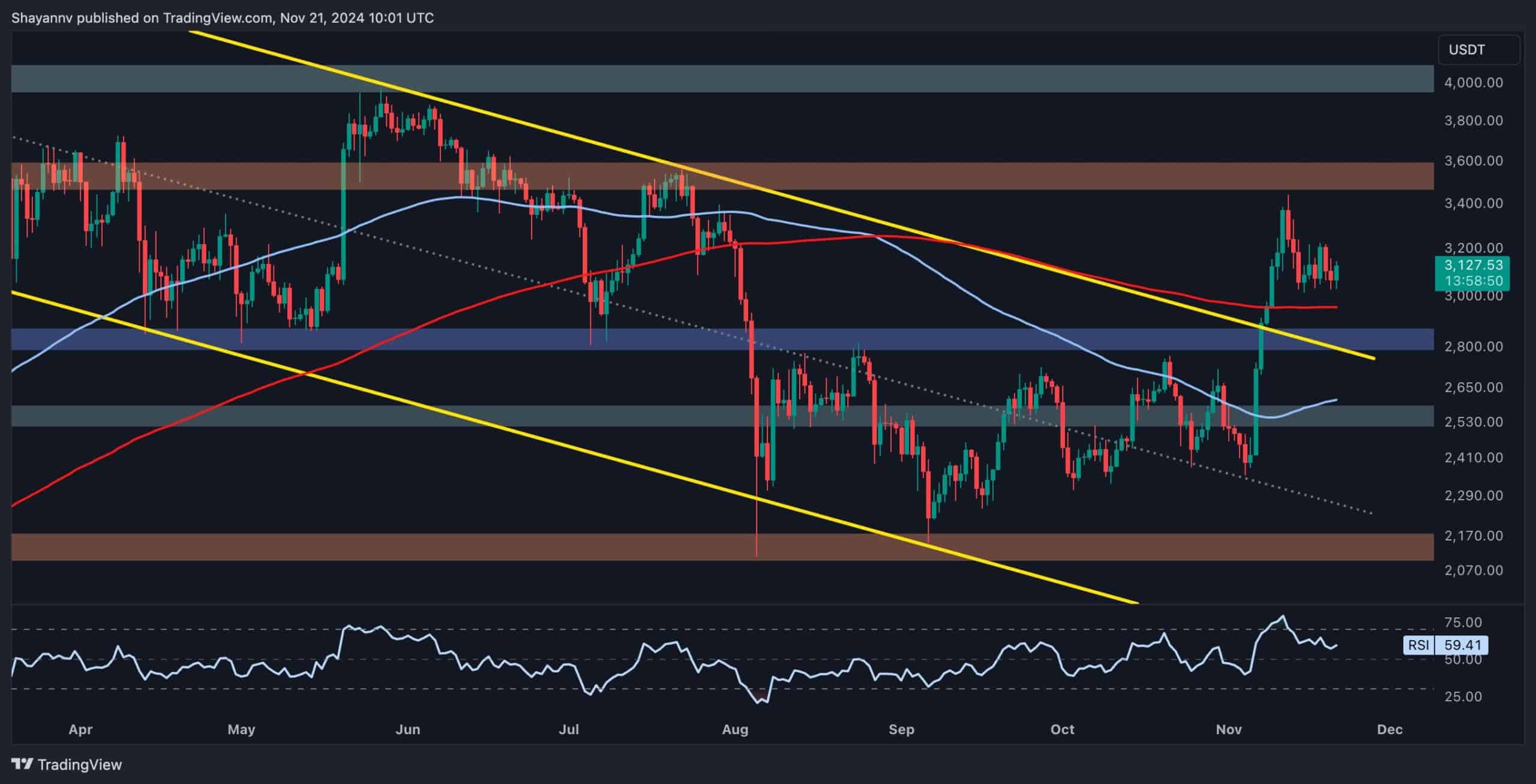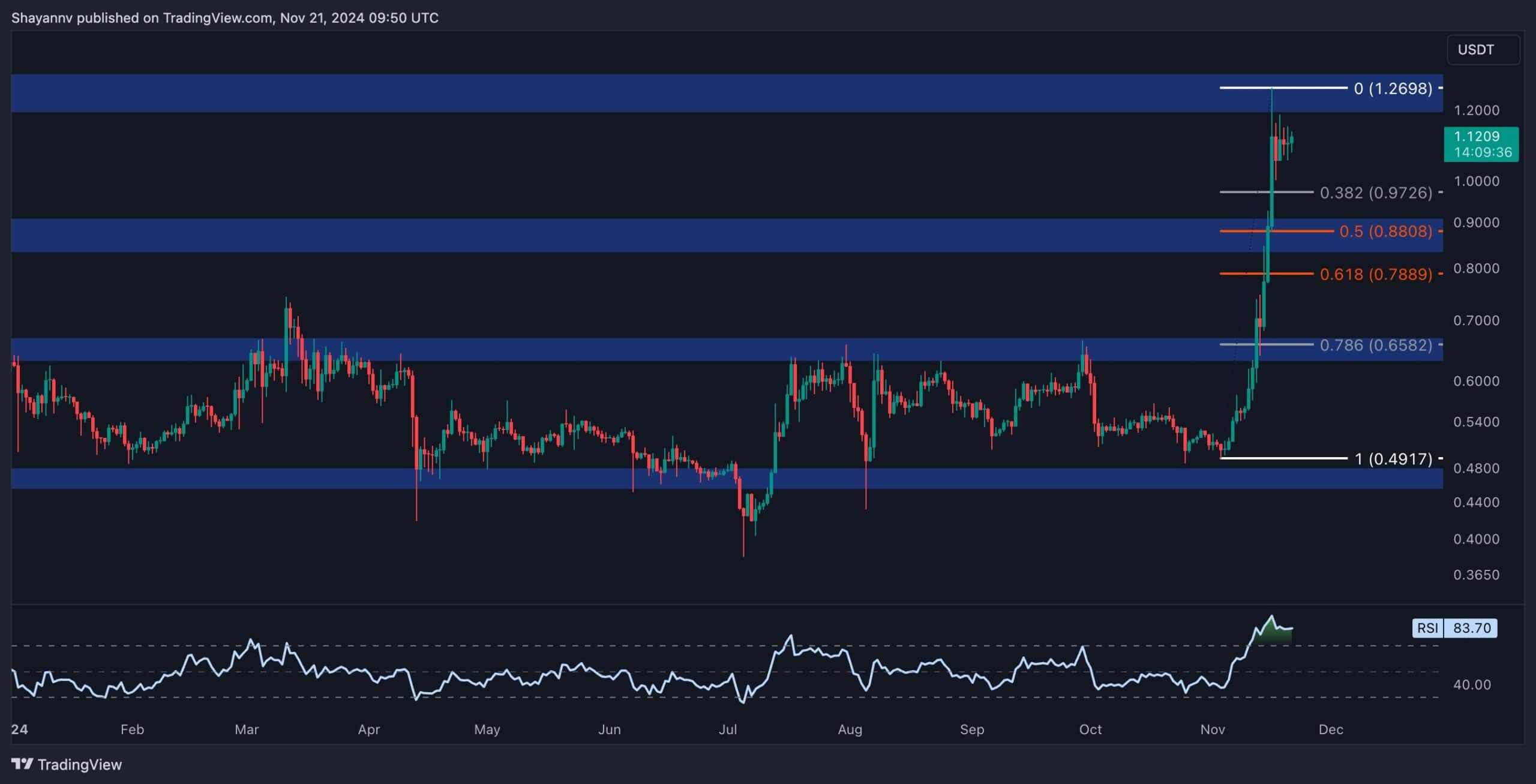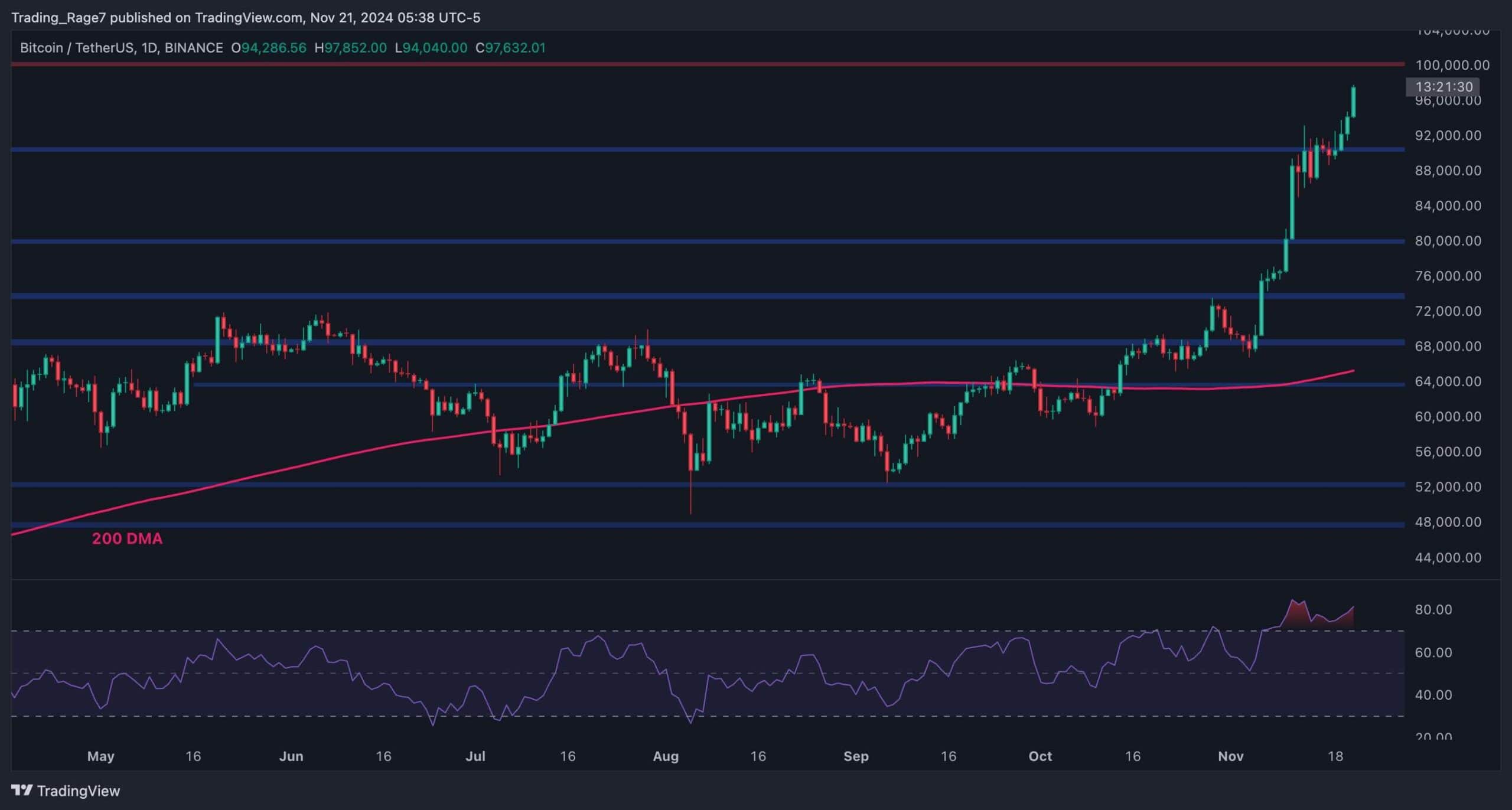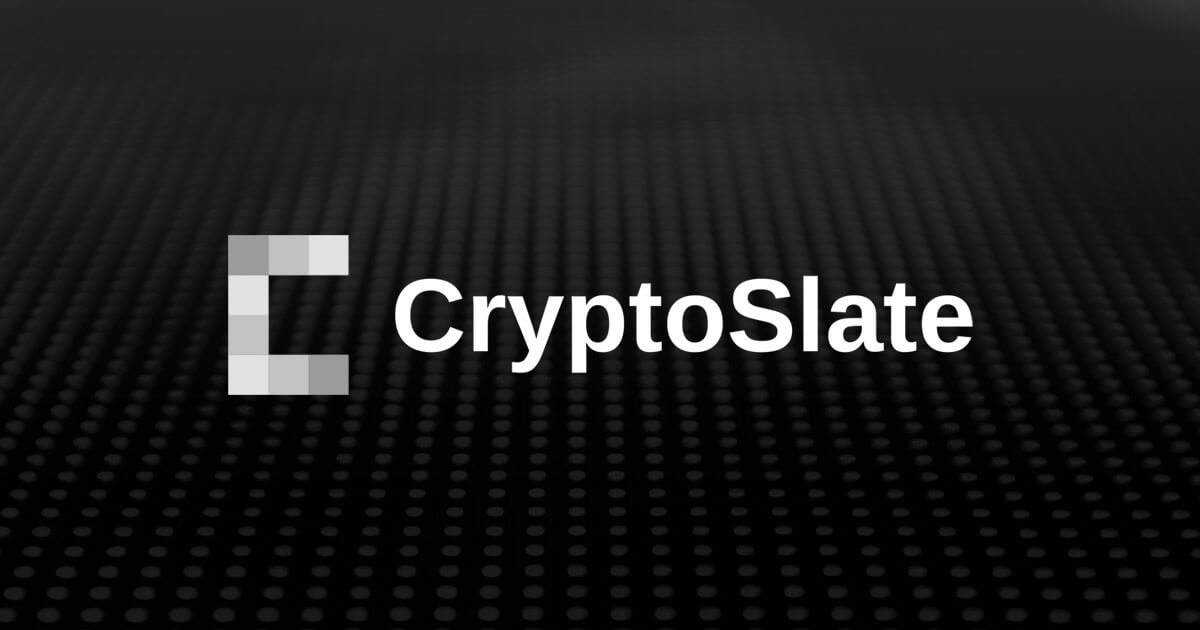BTC mining profitability continues to tumble despite the token’s price increasing, while communities living near mining sites are losing sleep and losing patience.
JPMorgan (NASDAQ: JPM) analysts issued a report this week noting that block reward miners’ daily revenue and gross profit both fell 6% in September, the third straight month of declines. This comes despite the fiat price of the BTC token having closed out the month of September several thousand dollars higher than its level at the end of August.
And despite BTC’s average transaction fees spending a good portion of September above their average rates in August, these fees accounted for only ~5% of September’s block rewards. It seems individual users were content to sit on their utility-devoid tokens throughout September, praying for a sign that every ‘number go up’ signal won’t be immediately followed by a swift reversal.
The average cost to mine a single BTC continues to outpace the block reward by a significant sum, which explains why so many mining operators have begun ‘pivoting’ to serving as data centers for artificial intelligence (AI) and other high-performance computing (HPC) tasks.
Compounding matters, the devastation caused by Hurricane Helene has knocked some U.S. mining operations offline. This week, CleanSpark saw its shares tumble around 14% after Helene forced many of its mining sites in southeastern states to temporarily shut down (in part to preserve scarce electrical grid capacity for more pressing needs).
CleanSpark issued an update on September 30 touting its efforts to bring most of these operations back online as soon as possible while reassuring investors that its mining infrastructure suffered “no material damage” from Helene’s wrath.
Last month, CleanSpark announced the $5.8 million acquisition of two additional mining sites in Mississippi, and a $27.5 million deal for seven facilities in Tennessee. Both states were impacted by Helene and can be expected to face similar challenges in the future as climate change—some of which, ironically, is caused by burning fossil fuels to meet high electricity demands—continues to increase the intensity of the annual hurricane season.
Other Nasdaq-listed operators—including Riot Platforms (NASDAQ: RIOT), Bitfarms (NASDAQ: BITF), Hut 8 (NASDAQ: HUT), Cipher Mining (NASDAQ: CIFR) and others—have also endured share price declines since last week, hit hard by the triple whammy of reduced block rewards, natural disasters and growing unease over a possible wider war in the Middle East.
Buy, buy, buy
With BTC retail activity showing zero signs of life, finding a newraison d’être has become an obsession for miners, particularly publicly traded U.S. firms that need to convince investors not to smash that ‘sell’ button.
Some miners are deprioritizing mining BTC in favor of outright buying it, based on their expectation that the ‘number go up’ will go up forever, so it’s just a matter of time until they’re in the black. MARA (NASDAQ: MARA), formerly Marathon Digital, recently spent $249 million buying 4,144 BTC at an average cost of $59,500 (a sum that BTC threatened to sink beneath after tumbling Tuesday on geopolitical concerns).
On September 16, Canadian mining outfit Cathedra Bitcoin announced a revised strategy focused on “repositioning the company away from the [BTC] mining business, toward one with more predictable cash flows and which generates attractive returns on capital—developing and operating data centers.”
Cathedra also plans to acquire additional BTC “through market purchases using cash flow generated by our data center hosting operations,” as well as “borrowing against balance sheet assets … and using the resulting proceeds to acquire more [BTC].”
Cathedra specifically cited the example set by MicroStrategy (NASDAQ: MSTR), which has acquired nearly 245,000 BTC tokens over the past couple of years by diluting its shares and taking on new debt. For this, Cathedra claims MicroStrategy has been “rewarded by equity markets,” which is sort of like saying the Titanic was totally set to break that trans-Atlantic speed record until that iceberg got in its face.
So, are the mining-abandoning miners like the rats leaving a sinking ship? Or are they the canary in the BTC coal mine, signaling that everybody should GTFO before it’s too late? Better still, miners should switch to supporting a blockchain that prioritizes utility over speculation, has a plan to transition from block rewards to transaction fees (as Satoshi intended), with a greener footprint to boot.
Noise pollution
BTC miners have (rightfully) come under attack for the strains they put on electricity grids simply to fuel a speculative financial activity that benefits a handful of token-holders. But residents who live adjacent to large mining operations have extra reason to complain, given the disruption to their lives from the constant noise generated by thousands of mining rigs and the fans needed to keep the rigs cool.
This backlash is a global phenomenon, as evidenced by the recent shutdown of a mining operation in Norway after local residents compared the experience to living next to a 24/7 sawmill. Last week, residents in Windom, Minnesota, celebrated after their protests convinced Colorado-based miner hosting outfit Revolve Labs (formerly Bit 49) to withdraw its permit to launch a mining facility just outside Windom.
A town meeting was held in August, at which many Windom residents cited concerns over their property values declining due to the noise issue. They noted excessive noise complaints by residents of Glencoe, Minnesota, the site of an already active Revolve mining operation. To date, none of the mitigating actions taken by Revolve have proved sufficient to reduce the noise to levels that Glencoe locals find acceptable.
Revolve’s COO Cody Nelson didn’t help his cause by claiming that a local couple who protested the Glencoe operation were “making noise because they think we make a lot of money and they think they’ll get something out of it by fighting us.” Nelson added that the noise mitigation efforts Revolve had taken were “expensive” and the company “won’t be doing any more” mitigation because “it would be cheaper to buy [the couple’s] house.”
Despite these blowups, Revolve is now pressing the Glencoe Economic Development Authority (EDA) to build a new combination mining facility and AI data center early next year. The plans call for some liquid-cooled rigs that could reduce some of the noise emanating from the facility, but some EDA officials are trying to nudge the site of Revolve’s new development further off the beaten path to avoid future conflicts.
Godless commies making too much noise
Down in Arkansas, the NewRays mining firm has filed a federal suit against local officials in Faulkner County for pursuing an unjust prosecution to shut down its local mining operation.
NewRays purchased land in Faulkner County in October 2022 and soon began developing its mining facility. NewRays alleges that by June 2023, Faulkner County officials had begun plotting against NewRays, in part due to residents’ noise complaints but also “because of the community’s perception of ‘foreign involvement’ in its operations.”
The ‘foreign involvement’ concerns allegedly stemmed from “widespread anti-Chinese sentiment” in the county at the time. This included the distribution of “multiple anti-Chinese newsletters” with titles such as How the Communist Chinese are Hijacking America, Locally and Power Companies Subsidizing Communist China Players!
The suit quotes Faulkner County Attorney Phil Murphy telling a public meeting there was little the County could legally do about the foreign involvement. However, they could “create a land use planning ordinance. We can create an ordinance that deals with things that we can measure like sound, so those are issues that have been upheld for years.”
The result was Ordinance 23-20, which restricted maximum decibel output to 60dB between 8am to 8pm and 55dB between 8pm to 8am. Violators would face criminal charges, despite NewRays’ contention that the County lacks the authority to impose criminal sanctions without a corresponding state statute.
As such, 23-20 “facially discriminates against data centers and cryptocurrency mining operations,” and NewRays in particular. Case in point: in July 2023, Maree Coats, a Justice of the Peace who acted as “primary sponsor” of 23-20, told a public meeting that “I want to vote to put [NewRays’] back against the wall.”
Mere days after 23-20 took effect, a group of local residents filed a civil complaint against NewRays, claiming that the noise emanating from the mining operation had made life “intolerable.” NewRays attempted to shift the complaint to federal court, but the county’s circuit court claimed jurisdiction, leading NewRays to file suit against the officials it deems responsible for the brouhaha.
It’s not easy scamming Green
Finally, last week saw a U.S. federal judge rule that the civil complaint filed last year against Green United LLC by the Securities and Exchange Commission (SEC) can proceed to trial.
In March 2023, the SEC accused the Utah-based Green United of defrauding $18 million from ‘investors’ who’d been swindled into investing in so-called ‘Green Boxes’ and ‘Green Nodes’ that allegedly mined a token called (wait for it) GREEN. Green United founders Kristoffer Krohn and Wright Thurston claimed that they would maintain the machines and dispense newly mined GREEN tokens to investors as they become available.
But there never were any ‘Green Boxes’ and the worthless GREEN tokens Krohn and Thurston dispensed had been minted all in one go shortly after they raised millions from investors. The SEC alleged that the pair used the funds to buy BTC mining rigs and kept the BTC tokens they mined for their own use.
On September 23, the U.S. District Court for the District of Utah, Central Division rejected the defendants’ bids to dismiss the suit, which largely hinged on the defendants’ claims that the SEC had failed to prove the existence of an investment contract between themselves and their investors/marks. Under the Howey test, such contracts are key to identifying whether a transaction involves a security that falls under the SEC’s purview.
The ruling by U.S. District Judge Ann Marie McIff Allen found that the SEC “has sufficiently alleged a security in the form of Green Boxes (computer hardware) coupled with a hosting agreement to operate the Green Boxes.”
The ruling also found that Howey’s ‘common enterprise’ criteria is more than evident given wording that “all investors share, proportionally, in the profits of the enterprise consisting of the jointly managed Green Boxes.” The defendants’ assertion that investors could earn “100%+ ROIs” and that Green United would be “doing all the work” to generate that return similarly triggers Howey’s ‘expectation of profits’ and ‘from the efforts of others’ criteria.
As for the fraud angle, the judge essentially said ‘hell, yes’ to the SEC’s assertions that the defendants were stone-cold scammers. And as for the defendants’ claims that their constitutional rights were violated because the SEC is improperly asserting authority in “some new arena,” the judge basically said ‘STFU’ and we’ll see you in court.
Watch: CoinGeek Weekly Livestream w/ Kurt Wuckert Jr. – Untangling Bitcoin Mining

















 English (US) ·
English (US) ·